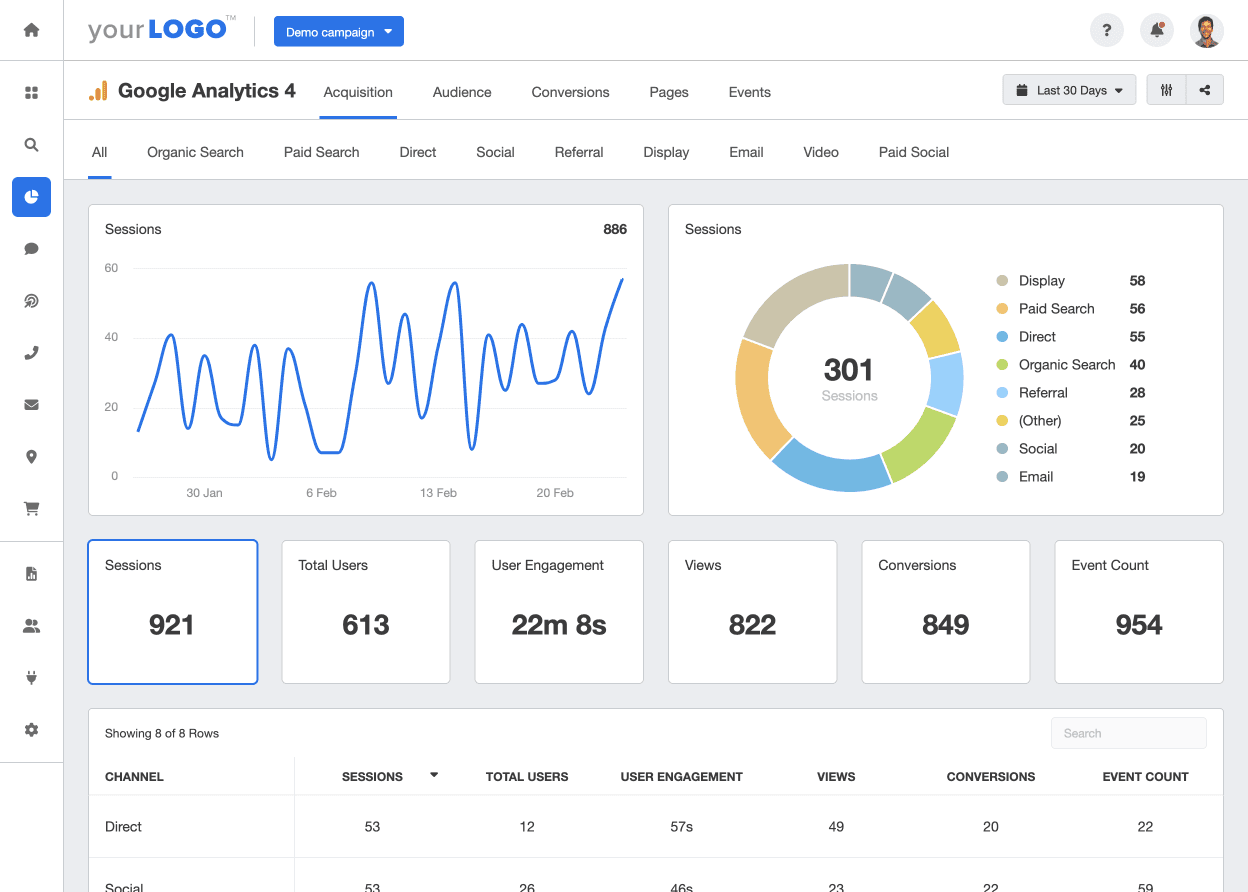Unloading the Secret: When Does the Google Analytics Tracking Code Send an Event Hit to Analytics?
Unloading the Secret: When Does the Google Analytics Tracking Code Send an Event Hit to Analytics?
Blog Article
Enhance Your Search Engine Optimization Approach With Effective Google Analytics Tracking Code
Including Google Analytics tracking code into your Search engine optimization approach is a pivotal action towards attaining quantifiable results. What certain techniques can you take on to make best use of the effect of this information on your Search engine optimization efforts?

Comprehending Google Analytics Essentials
To successfully take advantage of Google Analytics for Search Engine Optimization, it is important to grasp its foundational principles. Google Analytics acts as a powerful device for monitoring and analyzing internet site traffic, offering insights that are crucial for optimizing internet search engine efficiency. At its core, the system enables users to keep an eye on customer behavior, web traffic sources, and crucial performance signs (KPIs) such as bounce rates and session durations.
Knowledge with the customer interface is vital. Key areas consist of the Audience, Procurement, and Behavior tabs, each providing useful data. The Audience area supplies market insights, assisting to customize material to target customers effectively. The Procurement tab discloses how site visitors reach the site, whether through natural search, paid ads, or social media sites, leading strategic changes in advertising initiatives.
Recognizing metrics such as natural traffic volumes and conversion rates is vital for assessing search engine optimization efficiency. Inevitably, understanding these fundamentals enables electronic marketing professionals to harness the full capacity of Google Analytics, driving informed choices that enhance overall search engine optimization techniques. By establishing a solid structure, companies can efficiently evaluate their efficiency and determine possibilities for improvement in their on-line presence.
Setting Up Tracking Code
Correctly setting up the tracking code is vital for accurate data collection in Google Analytics. The primary step entails creating a Google Analytics account and home, where you will certainly receive a special tracking ID. This ID is necessary for linking your web site's information to your Google Analytics account.
As soon as you have your monitoring ID, incorporate the monitoring code snippet into your internet site's HTML. This is typically placed in the header section of each web page to guarantee it tons early in the page providing procedure. If you're making use of a Web content Monitoring System (CMS) like WordPress, several plugins streamline this process, enabling you to add the tracking code without straight HTML modifying.
After implementing the monitoring code, it is crucial to check its capability. You can use the Google Tag Assistant device to confirm if the tracking code is appropriately mounted and working. In addition, monitor the real-time reporting attribute in Google Analytics to confirm that information is being collected properly.
Ensuring that the tracking code is correctly established up lays the foundation for effective data analysis, enabling you to make enlightened decisions to boost your SEO method and overall site efficiency.
Secret Metrics to Screen
Identifying crucial metrics to keep an eye on is necessary for understanding the effectiveness of your SEO method via Google Analytics. By concentrating on details data points, you can assess the influence of your optimization initiatives her response and make educated decisions to improve efficiency.
This statistics mirrors the total health and wellness of your Search engine optimization method. A high bounce price might indicate that your material is not satisfying individual expectations or that your landing web pages need improvement.
Key phrase see post positions are additionally critical; tracking modifications in keyword settings assists evaluate the performance of your targeted SEO efforts. By very closely complying with these key metrics, you can obtain important insights into your Search engine optimization strategy's performance and determine locations for enhancement.
Studying User Actions
Recognizing user behavior is essential for improving your SEO method and taking full advantage of website performance. Google Analytics gives a wealth of data on user engagement metrics, such as bounce rates, time on site, and page views per session.
In addition, tracking customer circulation can reveal usual navigating courses, highlighting possible traffic jams or areas for enhancement. Comprehending the demographics, rate of interests, and geographic places of your visitors permits more customized material that talks to their requirements. Using segmentation functions in Google Analytics better boosts your capability to examine individual habits by allowing you to compare various audience groups.
Furthermore, keeping an eye on conversion rates and user actions can provide understandings into the effectiveness of your phone call to action and general site layout. This alternative view of user actions is essential for making informed choices navigate to this site that improve user experience and drive higher engagement, inevitably adding to improved search engine optimization efficiency.
Leveraging Insights for SEO
Continually leveraging insights gotten from individual behavior evaluation can considerably enhance your search engine optimization efforts. By making use of Google Analytics, you can recognize essential metrics such as bounce prices, session duration, and user circulation, which reveal exactly how visitors connect with your material. These insights allow you to pinpoint locations requiring enhancement, such as high exit web pages or underperforming search phrases.

Furthermore, tracking organic traffic sources gives clarity on which networks are most efficient, enabling you to assign resources strategically (when does the google analytics tracking code send an event hit to analytics?). By analyzing conversion prices together with website traffic information, you can determine which pages drive real service results, refining your search engine optimization technique better
Including these understandings into your content strategy not just improves visibility yet also fosters an extra user-centric technique. Ultimately, a data-driven search engine optimization method informed by analytics not only boosts positions but additionally aligns your goals with customer expectations, resulting in sustained development and interaction.
Final Thought
Efficient execution of Google Analytics tracking code substantially improves a Search engine optimization approach by providing vital understandings right into customer actions and traffic sources. Ultimately, leveraging these insights contributes to refining SEO efforts, driving even more pertinent website traffic, and boosting total internet site efficiency.
Including Google Analytics tracking code right into your Search engine optimization method is a pivotal step towards attaining quantifiable outcomes. At its core, the platform allows users to monitor user habits, traffic sources, and essential performance indicators (KPIs) such as bounce rates and session periods.
Recognizing customer habits is vital for fine-tuning your SEO strategy and taking full advantage of site performance.Constantly leveraging insights acquired from individual behavior evaluation can dramatically improve your SEO initiatives.Reliable application of Google Analytics tracking code considerably boosts a Search engine optimization technique by providing critical insights right into user behavior and web traffic sources.
Report this page